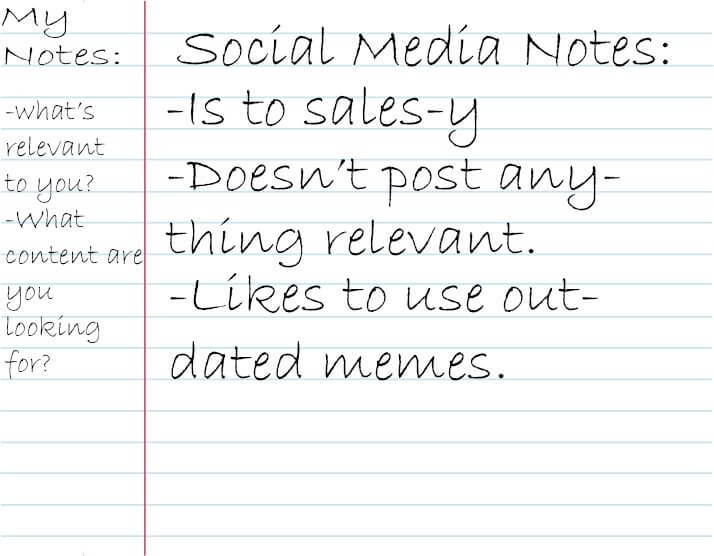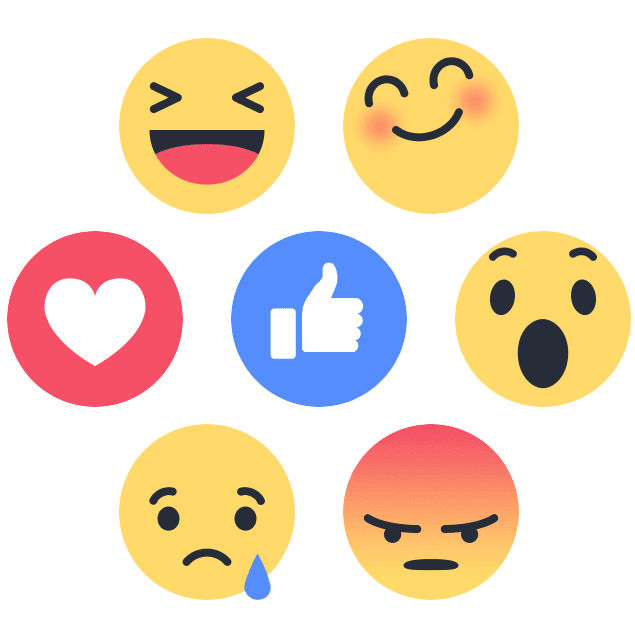Social listening is super important and something you thought you had a good handle on. It was one of the things you liked about your company.
“Unlike the others: We listen.”
You put that phrasing everywhere. In your blogs, your newsletters, social media. It was the second most visual thing people saw, next to your expertly designed logo. So why is no one engaging with you?
“I don’t know what else to do!” you think. “I do everything I’m supposed to. The newsletters, the socials. I post several blogs a month. I even sit down with customers. What am I doing wrong?”
Not giving your customers what they want, for one. If you want to learn what YOUR customers want and how social listening can help, read on. Do You Need an SEO Company in Houston?
THE PROBLEM

No one likes to admit they don’t listen well. If someone told me I didn’t practice social listening, I’d scoff.
“Yeah, right. You keep thinking that, buddy.” But they’d be right. That’s because humans aren’t really good at listening.
Think about it. We’re the most social animals on the planet and we can’t tell you what we just heard, right after hearing it. Why?
Because we talk too slow. According to an article in Scientific American, the human brain can process up to 400 words per minute. But the fastest human mouth can only speak about 125 words per minute. That leaves our brains with a lot of unused processing power.
THE HUMAN BRAIN CAN PROCESS UP TO 400 WORDS PER MINUTE.
So what do we do?
We look at our phones, fidget with spinners, think about what we’re going to say. Our brains are so hungry for more information to process that we don’t actually process the information we get.
WHY THIS MATTERS

A few years ago Starbucks didn’t offer vegan milk options. People asked for them, but then CEO Howard Schultz didn’t budge. In his mind lattes needed the full fat of milk and he wasn’t going to relent.
Then, during a regular store visit, one customer changed everything. They had asked for non-diary milk and when they found out they wouldn’t get it, the customer stormed right out. That’s when Schultz saw money walking out the door. But he also saw something else.
In his book, Onward: How Starbucks Fought For Its Life Without Losing Its Soul, Schultz talked about his store visits. He figured the only real way to see what needed changing was go to the actual stores themselves. He’d talk to baristas and the daily customers.
But as the dairy story shows, Schultz wasn’t using social listening. In all those months and all those stores, he wasn’t really tuning into what his customers wanted. And that was costing him big.
If you’re not listening, you’re losing out. Below, we’re going to go through 6 tips on how you can listen better to your customers.
1. FOCUS ON THE MOMENT

The first step to social listening is cutting off distractions.
This means putting your phone on airplane mode.
This means shutting the door to the room (if you can) and focusing – not just on the person you’re speaking with, but on the moment you’re in right now. And that moment is an opportunity to connect.
THAT MOMENT IS AN OPPORTUNITY TO CONNECT.
See, what customers want most is to be listened to. They want to know that if they have a concern, you’re going to put yourself front and center to hear it.
The beauty of social listening is that’s not just for the customers you speak with in-person. In basic terms, social listening is when you put your eyes and ears to social media and see what others think of your band.
2. ASK WHY

Asking why is a super effective social listening trick to engage customers. It gives them a chance to express what they want and get to the heart of things. But you don’t have keep asking why in the annoying way a child does; you can change it up.
For example:
“I’ve heard you really like our financing program. Why is that?”
See, what this question is doing is turning everything to the customer. It’s saying you honestly want to hear about their experiences. All anyone really wants is the knowledge that what they’re saying is reaching you. That you are actually taking in what’s said, and not just appearing like you are.
If the conversation stalls you ask questions/say things like:
- “How did you feel when X happened?”
- “Tell me more about X.”
- “Why do you think that is?”
To illustrate this let’s imagine someone mentioned your company on Twitter. You can reply to the tweet by typing something like, “Your tweet mentions you didn’t like when we did X. Can you explain why that is?”
This shows you care and gives the person a chance to say what they want you to hear. You might not like what their reply is, but it’s essential that you read it to see what they say.
3. EMPATHY WORKS

One of the best ways to practice social listening is to be empathetic. But don’t stress if your first try at it isn’t what you wanted. Empathy is like a muscle.
It gets stronger each time you work it. And how do you work it? By thinking about things from your customer’s point of view.
Imagine this a moment: You have a finance company. It offers a wide verity of loan programs, but no one is buying. Your newsletter that goes out each month barely gets read, let alone clicks. So how can you increase newsletter readership? By reading the newsletter like a customer would.
So instead of nodding at certain points and smiling at the great copy, think about how a customer might feel when they read it. Does it sound to sales-y? Does it boast too often?
Try to imagine things like your customer would and put yourself in their place. You find that while the newsletter explains your programs well, it doesn’t make them seem possible.
All lenders say their loans work well, but rarely will they give examples. So that’s when you decide to mention the the success stories, the customers that got a business loan and did well in the end.
By putting things in the customers prospective your showing that you “get” them and their situation. Learn What Your Customers Want.
THE TONE OF SOMEONE’S WORDS IS JUST AS IMPORTANT AS THE WORDS THEMSELVES.
4. USE MARGINS WHEN TAKING NOTES
Has this ever happened to you? You’re sitting in a super productive meeting with a customer. Ideas are bouncing around the room, neurons are firing wild, and you’re trying to catch it all on paper. But then, after the meeting ends and take a look at your notes you realize something.
It’s all gibberish.
Sure, the words are written clearly, but it’s such a mishmash of notes and ideas that you don’t recall who said/thought it. Here is how you fix that: use the margins.
Global CEO coach Sabina Nawaz, the author of Harvard Business Review article “Become a Better Listener by Taking Notes,” explains:
“Margin Notes allows you to think, process information, make connections between points of discussion and ask effective questions instead of blurting out the first thing that comes to mind.”
Here is how it works. Break down the notes into two sections. The body, and the margins. The body of the notes is for what people say most about your company on social media. These are the common things people have said often.
The margins are your thoughts. Responses you have to what’s being said, solutions you want to try and questions you have. Here’s what it looks like:

As the pictures shows, the body is what’s been said about your company on social media. Your margin notes are your thoughts and responses to it. What you’d like to ask your customers.
5. RECAP WHAT’S SAID

People want to be heard. They want to know you’re processing what they’re saying. And one way to do is to recap what’s said. It works like this.
When a customer is explaining a new idea they had, you can respond with, “So, what I’m hearing is X.” Or, “When you say this, do you mean X?”
Rephrasing it back to them does three things:
- You process things better
- It forces you to pay attention to them
- You show them they’re being heard through social listening.
So when a customer mentions an idea they had over social media, you can use the questions above to better understand what they mean. They’ll see that you’re taking their suggestion seriously, something all people want. Even if you can’t do their suggestion at the end, at least they’ll know you tried, at that means a lot.
6. TAKE EVERYTHING IN STRIDE

The main point of social listening is to spot trends about your company’s perception online. That’s why it’s super important NOT to freak out over every negative comment. The goal here is to look for patterns/problems that might need addressing.
For instance, suppose you have a bakery. People flock to your store for your fresh loaves. But then you notice something. Not only is your sourdough not selling like it used to, but people are also talking about its poor taste on Facebook!
If you only saw one negative comment you could write it off. Maybe the commenter is not a fan of sourdough? But since it’s a lot of comments from people who usually rave about it, you take notice. That’s when you realize something.
The sour comments on your sourdough started a month ago when you switched to a generic flour. You thought the switch would save you money, but from what you’re seeing, it’s costing you! So you do the sensible thing and switch back. Within a few weeks, the comments are like what they used to be: All smile emojis and bread gifs.
GET HELP WITH SOCIAL LISTENING TODAY
Find out more by talking to the experts today! We’ll craft you a Houston SEO plan that works for you to increase your ranking and grow your business.
EWR Digital is a great marketing agency that’s been helping businesses grow since opening its doors in 1999. Get to know us better by clicking here. Interested in a 15-minute call with one of our marketing experts? Call us at 713-592-6724 today! Call Now!
Learn What Your Customers Want| EWR Digital – Houston, TX
